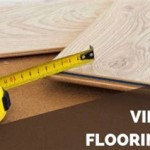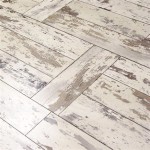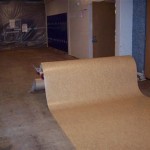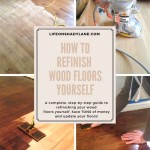Ollies Wood Flooring: A Comprehensive Guide
Ollies Wood Flooring offers a diverse range of wood flooring options, catering to various aesthetic preferences and practical needs. Understanding the nuances of these offerings, from the types of wood used to the installation processes available, is crucial for making an informed decision. This article provides a detailed overview of Ollie's Wood Flooring, focusing on key aspects such as the types of wood, styles, installation methods, maintenance, and factors influencing cost.
Types of Wood Offered by Ollies
Ollies Wood Flooring provides a selection of wood types, each possessing unique characteristics that influence durability, appearance, and price. Hardwood options, known for their longevity and resistance to wear and tear, are frequently chosen for high-traffic areas. Softwood options, while generally less expensive, may be suitable for areas with less foot traffic or for those seeking a specific aesthetic. The specific wood species available at Ollie's can include oak, maple, hickory, and pine, among others. Each species exhibits distinct grain patterns and color variations.
Oak is a popular choice due to its versatility and inherent durability. It accepts stains well, allowing for a wide range of color finishes. Red oak typically features a reddish hue and a more pronounced grain, while white oak is lighter in color and offers greater water resistance. Oak is a dense wood, making it resistant to dents and scratches, contributing to its longevity as a flooring material.
Maple is known for its smooth, uniform grain and light color, which lends itself to a contemporary aesthetic. It is a hard and durable wood, although it can be more susceptible to staining than oak. The subtle grain of maple makes it a good choice for those seeking a minimalist look. Its density provides excellent resistance to wear and tear.
Hickory is one of the hardest domestic wood species available. It boasts a distinctive grain pattern and color variation, ranging from light browns to dark browns. Hickory is highly durable and resistant to impact, making it suitable for high-traffic areas and active households. The prominent grain pattern adds character and visual interest to a room.
Pine is a softwood option that is generally more affordable than hardwoods. It is characterized by its knotty appearance and warm, yellowish tones. Pine is less resistant to dents and scratches than hardwoods, but it can be a suitable option for those seeking a rustic or country-inspired look. Its softness also makes it easier to work with during installation.
Beyond solid wood options, Ollie's may also offer engineered wood flooring. Engineered wood consists of a thin veneer of real wood bonded to a core of plywood or other composite material. This construction provides greater stability and resistance to moisture and temperature fluctuations compared to solid wood. Engineered wood can be a suitable option for basements or other areas where moisture is a concern.
Styles and Finishes Available
Ollies Wood Flooring offers various styles and finishes to complement diverse design preferences. Plank width, finish type, and surface texture all contribute to the overall aesthetic of the flooring. Understanding these options is crucial for achieving the desired look and feel in a space.
Plank Width: The width of the individual planks can significantly impact the visual appearance of the floor. Narrow planks can create a more traditional and formal look, while wider planks can create a more modern and relaxed feel. Ollie's may offer planks in a range of widths, from 2 1/4 inches to 7 inches or more. The choice of plank width depends on the size of the room and the desired aesthetic.
Finish Type: The finish applied to the wood flooring protects the surface and enhances its appearance. Common finish types include polyurethane, oil-based finishes, and water-based finishes. Polyurethane finishes are durable and resistant to scratches and stains. Oil-based finishes penetrate the wood and provide a natural, matte look. Water-based finishes are low in VOCs (volatile organic compounds) and are considered more environmentally friendly. The choice of finish depends on the desired level of gloss, durability, and environmental considerations.
Surface Texture: The surface texture of the wood flooring can add character and visual interest. Options include smooth, hand-scraped, wire-brushed, and distressed textures. Smooth surfaces offer a clean and modern look. Hand-scraped textures mimic the look of antique wood flooring, with subtle variations in the surface. Wire-brushed textures enhance the grain pattern of the wood. Distressed textures feature intentional imperfections, such as dents and knots, to create a rustic and aged look. The choice of surface texture depends on the desired aesthetic and the level of maintenance required.
Color is another crucial aspect of styling. Ollie's will offer a range of stain colors, from light and airy to dark and dramatic. Light-colored flooring can make a room appear larger and brighter, while dark-colored flooring can create a more intimate and sophisticated atmosphere. The choice of color should complement the existing décor and the overall design scheme of the space.
Installation Methods and Considerations
The installation method chosen for wood flooring significantly impacts its performance and longevity. Ollie's Wood Flooring may offer different installation options, including nail-down, glue-down, and floating installations. Each method has its advantages and disadvantages, depending on the type of flooring, the subfloor conditions, and the level of DIY expertise of the installer.
Nail-Down Installation: This method is typically used for solid hardwood flooring and involves nailing the planks directly to a wood subfloor. It is a traditional method that provides a secure and stable installation. However, it requires a wood subfloor and may not be suitable for concrete subfloors. Nail-down installation typically requires specialized tools and expertise.
Glue-Down Installation: This method involves adhering the wood flooring to the subfloor using a specialized adhesive. It can be used for both solid hardwood and engineered wood flooring. Glue-down installation provides a secure and stable installation and can be used over concrete subfloors. However, it requires careful preparation of the subfloor to ensure proper adhesion. The type of adhesive used is crucial and should be compatible with the flooring material and the subfloor. Improper installation can lead to problems such as cupping, warping, and adhesive failure.
Floating Installation: This method involves connecting the planks together using a tongue-and-groove system, creating a "floating" floor that is not directly attached to the subfloor. It is commonly used for engineered wood and laminate flooring. Floating installation is generally easier to install than nail-down or glue-down installation and can be used over a variety of subfloors, including concrete. However, it requires an underlayment to provide cushioning and reduce noise transmission. The underlayment also acts as a moisture barrier.
Proper subfloor preparation is crucial for successful wood flooring installation, regardless of the method chosen. The subfloor must be level, clean, and dry. Any imperfections or moisture issues must be addressed before installation begins. Uneven subfloors can cause problems such as squeaking, warping, and premature wear and tear. Moisture can damage wood flooring and lead to mold growth.
Professional installation is often recommended, especially for complex installations or when dealing with solid hardwood flooring. Professional installers have the experience and expertise to ensure that the flooring is installed correctly and according to manufacturer specifications. This can help to prevent problems and ensure the longevity of the flooring.
Maintenance and Care
Proper maintenance and care are essential for preserving the beauty and extending the lifespan of wood flooring. Regular cleaning and protection from scratches and moisture are key to maintaining the floor's appearance and preventing damage. Understanding the specific care requirements for the type of wood and finish is crucial.
Regular Cleaning: Routine cleaning should involve sweeping or vacuuming to remove dirt and debris. A microfiber mop is ideal for dusting and cleaning wood floors. Avoid using excessive water, as this can damage the wood. When mopping, use a damp mop with a mild wood floor cleaner. Avoid using harsh chemicals, abrasive cleaners, or steam cleaners, as these can damage the finish.
Scratch Protection: Place mats or rugs in high-traffic areas to protect the flooring from scratches and wear. Use felt pads under furniture legs to prevent scratching. Avoid wearing shoes with high heels or cleats on wood floors. Trim pets' nails regularly to prevent scratching. Taking these precautions can significantly reduce the risk of scratches and dents.
Moisture Control: Wood flooring is susceptible to damage from moisture. Avoid spills and clean up any spills immediately. Use doormats at entrances to prevent water and dirt from being tracked onto the floor. Control humidity levels in the home to prevent excessive expansion or contraction of the wood. Consider using a dehumidifier in humid climates and a humidifier in dry climates.
Refinishing: Over time, wood flooring may become worn or scratched. Refinishing can restore the floor to its original beauty. Refinishing involves sanding down the old finish and applying a new finish. This process can be done several times throughout the life of the flooring. Consider hiring a professional to refinish wood floors, as it requires specialized equipment and expertise. The frequency of refinishing depends on the amount of traffic and the type of finish used.
Factors Influencing Cost
The cost of Ollies Wood Flooring is influenced by several factors, including the type of wood, the style and finish, the installation method, and the size of the area to be covered. Understanding these cost factors can help in budgeting for a wood flooring project.
Type of Wood: Hardwood flooring is generally more expensive than softwood flooring. Exotic wood species, such as Brazilian cherry or walnut, are typically more expensive than domestic wood species. Engineered wood flooring can be a more affordable option than solid hardwood flooring, especially for larger areas.
Style and Finish: Wider planks, custom finishes, and specialty textures can increase the cost of wood flooring. Hand-scraped and distressed textures often require more labor and are therefore more expensive. The type of finish used can also impact the cost, with some finishes being more durable and requiring more specialized application.
Installation Method: Nail-down and glue-down installations are typically more expensive than floating installations, as they require more labor and expertise. Complex installations, such as those involving stairs or intricate patterns, will also increase the cost. Professional installation is generally more expensive than DIY installation, but it can ensure that the flooring is installed correctly and according to manufacturer specifications.
Area Size: The larger the area to be covered, the higher the overall cost will be. However, some flooring retailers may offer discounts for larger orders. Accurate measurements are essential for calculating the amount of flooring needed and avoiding waste. It is generally recommended to order approximately 10% extra flooring to account for cuts and waste.
In addition to the cost of the flooring itself and the installation, other costs to consider include subfloor preparation, removal of old flooring, and trim and molding. These costs can add up and should be factored into the overall budget.

Action Tesa Ollie Wood Mt Flooring At Rs 110 Sq Ft In Kolkata Id 20794650530

Action Tesa Ollie Wood Mt Flooring At Rs 110 Sq Ft In Kolkata Id 20794650530

Finishing Our Basement 27 Painting Walls Installing Vinyl Plank Flooring From Ollie S

Action Tesa Ollie Wood Mt Flooring At Rs 110 Sq Ft In Kolkata Id 20794650530
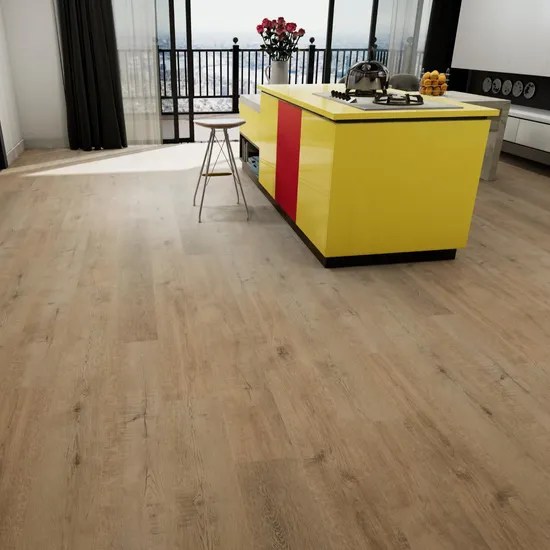
Teak Vinyl Flooring Parkay Ollies Buy China Spc Waterproof Building Materials Made In Com

Beige Flooring Ollies Vinyl 5mm Plank Pvc China Spc Tile Made In Com

Action Tesa Ollie Wood French Bleed Flooring For Home Office And Hotel At Rs 110 Square Feet In Gurugram

Action Tesa Ollie Wood Mt Flooring At Rs 110 Sq Ft In Kolkata Id 20794650530

Ollie S Bargain Updated April 2024 19 Photos 620 East Diamond Ave Evansville Na Discount Phone Number Yelp

Photos At Ollie S Bargain 2 Tips From 133 Visitors
Related Posts



